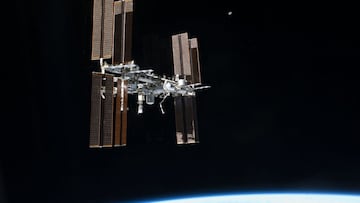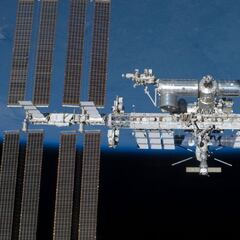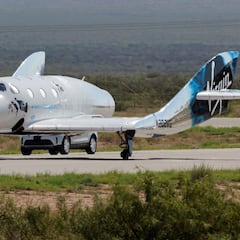What is the NASA DART mission?
On Wednesday, NASA will launch a spacecraft to test our capability to defend the Earth against a potential future inbound asteroid, here’s how it will work…

NASA will launch a spacecraft on Wednesday to see if humans have the capability to prevent a future earthbound asteroid from making impact. NASA stresses that the asteroid in question, Didymos and its moonlet, pose not threat to the Earth and are being carefully observed prior to the experiment. But why fix something if it’s not broken?
The Earth’s atmosphere is constantly bombarded by space debris, 100 tons every day according to NASA, but mostly those particles are the size of grains of sand or smaller. However, every few million years a whopper comes along that could threaten life as we know it. But even more worrying are the ones in between.
Also see:
- Did a rocket just hit the Moon?
- The story behind the Blood Moon: What causes it?
- Arcane Act 3 release date: what time are the new episodes coming out in Netflix?
- Where to buy PS5 on Black Friday 2021: times, restocks & deals at Walmart
Asteroids don’t need to be big to be destructive
Most meteors burn up on entry into Earth’s atmosphere, the friction with the air vaporizes them or breaks them in to smaller pieces that are generally not dangerous. Still, every 2,000 years, give or take, a space rock the size of a football field, which is big enough to cause significant local damage, enters our atmosphere. Didymos’ moonlet is about the right size for that measuring roughly 160 meters, Didymos on the other hand is about 780 meters across. To find out just how much damage an Earth impact could cause you can check an online tool provided by the Imperial College of London and Purdue University.
🚀 @NASA & @SpaceX are completing key milestones for the #DARTmission!
— NASA's Launch Services Program (@NASA_LSP) November 22, 2021
Last week, the DART spacecraft was encapsulated inside the payload fairings that will protect it during launch atop a #Falcon9 and teams completed a successful Flight Readiness Review: https://t.co/16FohmMvUw pic.twitter.com/XYW93mQOTj
Even smaller celestial bodies that enter Earth’s atmosphere can cause extreme damage if they explode before reaching the ground. In 1908, a meteor perhaps 20 meters across detonated over the Siberian forest in Russia. The force of the blast, known as the Tunguska event, was equivalent to that of a 12 megaton bomb and leveled an area of around 830 square miles. Another thought to be of similar size around 3,700 years ago wiped out the city of Tall el-Hammam in the Jordan Valley and the surrounding area couldn’t be farmed for at least 300 years. This event is credited with being the inspiration for the biblical story of Sodom and Gomorrah.
DART mission will change asteroid’s orbit
NASA has yet to discover an asteroid that will be a threat to Earth in the next 100 years that is over 140 meters in size. As of October 2021, only 40 percent of them have been discovered according to NASA. Since there is no risk of Didymos or its moonlet hitting the Earth that makes the “perfect testing ground to see if intentionally crashing a spacecraft into an asteroid is an effective way to change its course.”
Context: "NASA's Double Asteroid Redirection Test (DART) will be the world’s first mission to test planetary defense techniques, demonstrating one mitigation method of asteroid deflection, called kinetic impact."
— Jamie Groh, M. Ed. (@AlteredJamie) November 19, 2021
Credit: NASA/Johns Hopkins APL https://t.co/CEsozeNnlT pic.twitter.com/1FQFvpv98n
Related stories
The Double Asteroid Redirection Test (DART) mission will launch from Vandenberg Space Force Base, California on 24 November aboard a SpaceX Falcon 9 rocket. It will meet up with Didymos’ moonlet in late September 2022 when the two asteroids are around 11 million kilometers (over 6.8 million miles) from Earth. The proximity will allow researchers to monitor the effects of the impact on the smaller asteroid from Earth.
The DART spacecraft will smash into the moonlet at around 6.6 km/s (just over 4 miles per second) and should change the speed of its orbit around Didymos by a fraction of one percent. That small percentage will mean a change of several minutes in the amount of time the moonlet takes to go around its larger partner which will be noticeable from Earth.


